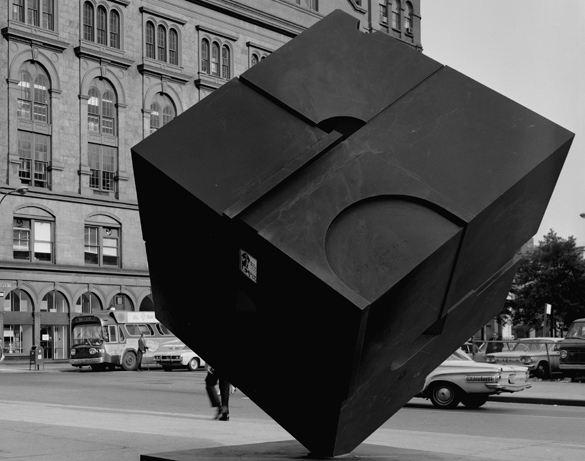The Alamo Turns 50!

On November 1, 1967, an 8′ x 8′ x 8′ 1,800-pound giant black cube was installed in Astor Place as one of 25 temporary public artworks by the NYC Department of Cultural Affairs. However, it was so popular that local residents petitioned the City to keep it, and except for its absences for restorations over the past few years, it has stood there ever since.
Bernard “Tony” Rosenthal’s sculpture was originally named “Sculpture and the Environment,” but was eventually renamed The Alamo by his wife, Cynthia Rosenthal, because its size and mass reminded her of the famous Alamo Mission in San Antonio.

Join us today to wish the East Village’s favorite public artwork a happy 50th birthday! Share your birthday wishes, celebrate on the sidewalk, create and collage mini-spinning cubes, fold origami cubes, learn the history of the Cube with mini-walking tours around the square, keep the cube spinning for charity, and much more! Speakers will salute 50 years of one of New York’s most iconic and engaging public works of art. Please RSVP here.
For decades the Alamo sat in the middle of Astor Place’s traffic island. It was isolated and stood alone as traffic whizzed by on all sides. While Astor Place is still Astor Place, it has a different feel now. The plaza has been pedestrianized with a street closure, and public seating and other public space has been added.
This Saturday GVSHP is holding an East Village Scavenger Hunt with Urban Archive. The event is free and sponsored by Brooklyn Brewery. Sign up here. Hint: One of the clues may be around Astor Place’s most famous sculpture.
Click here to read about GVSHP’s 2011 efforts to respect and preserve the historic street patterns of Astor Place and Stuyvesant Street as the area was pedestrianized and reconfigured. GVSHP recommended that their former routes should be made plainly clear in the design, and the historic street patterns are now recognized with granite inlays in curb markings that reflect the previous path of the streets.

Click here to read more about the Alamo as a public work of art.
